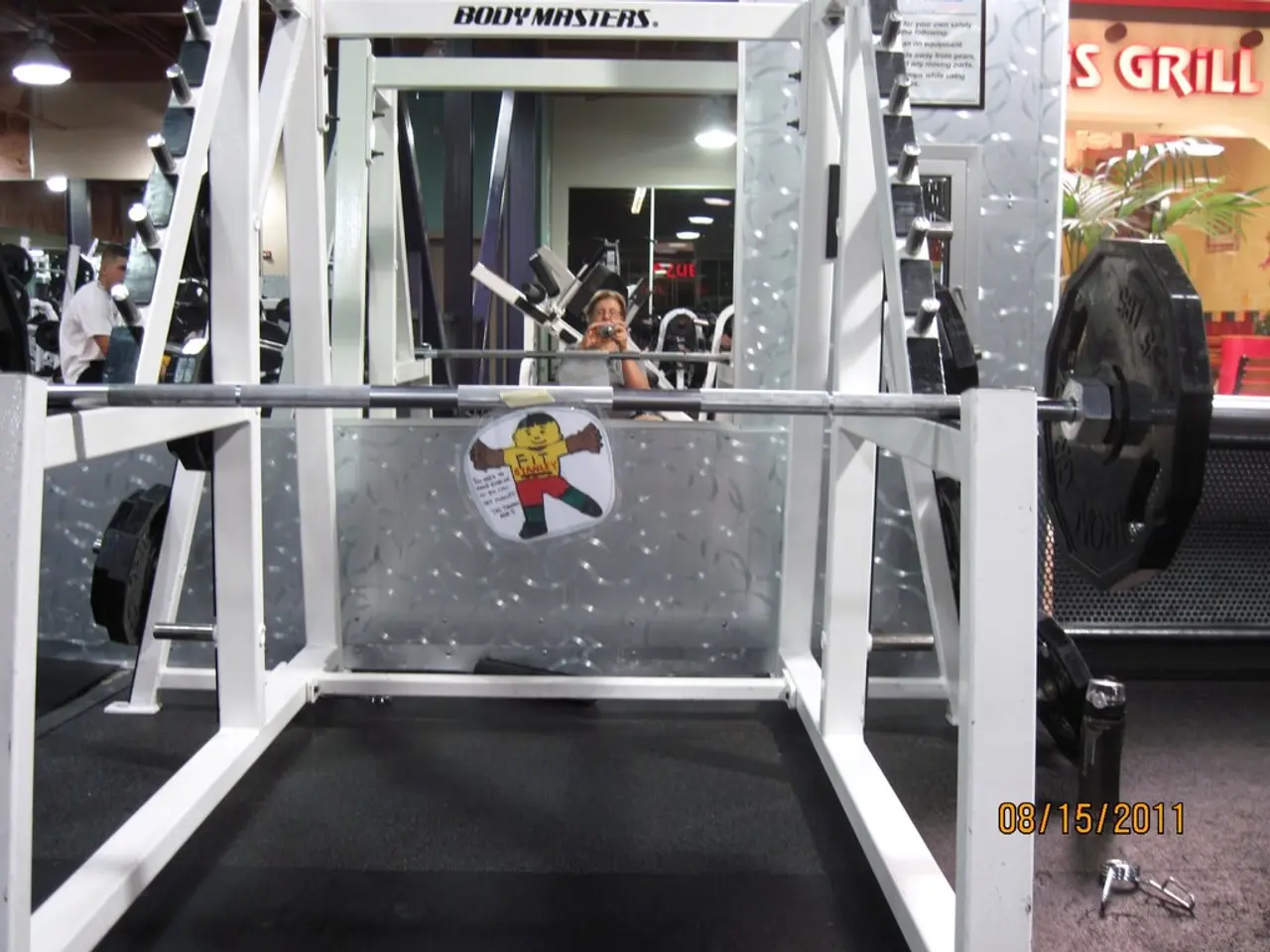Building Strongness Statically: Mastering Isometric Core Exercises with No Motion Required
Strengthen Your Core with Isometric Training
Isometric core training is a valuable approach to building a strong and functional core, offering numerous benefits such as improved posture, injury prevention, and enhanced athletic performance. This low-impact, time-efficient training method focuses on improving stability, muscle endurance, and control, particularly in the deep stabilizing muscles of the core.
Some effective isometric core exercises include:
- Hollow Body Hold: This move improves core endurance and stability. Lie on your back, lift your head, shoulders, arms, and legs off the ground creating a slight curve like a banana shape. Engage your core and press your lower back into the floor. Hold for 20 seconds to one minute, modifying by bending knees if needed.
- Hip Bridge (Glute Bridge): This exercise strengthens the glutes, lower back, and core, supporting pelvic stability. Lie on your back with knees bent and feet flat. Press through your heels, lift hips off the ground forming a straight line from shoulders to knees, squeezing glutes. Engage your core to avoid overarch. Hold for 20 seconds to a minute.
- Forearm or High Plank: This exercise improves upper-body stability and core strength. Maintain a straight body line on forearms or hands, engaging the entire core, shoulders, and chest. Holding this position strengthens the core muscles.
- Wall Sit: This exercise promotes lower-body and core endurance. Hold a seated squat position against a wall for 20-30 seconds.
- Isometric Lunges: This move improves unilateral strength and balance. Holding a lunge position engages the quads, glutes, hamstrings, calves, and core.
These exercises can be combined into full-body isometric routines targeting multiple muscle groups efficiently without equipment. While exercises like Russian twists and bicycle crunches are excellent for deep core strength and dynamic control, they are not purely isometric but complement isometric holds by targeting rotational and flexible core strength.
For beginners, starting with shorter hold times (e.g., 10-20 seconds) and gradually increasing the duration as strength improves is recommended. Aim for 2-3 times per week for isometric core training, allowing for adequate recovery between sessions.
While isometric core training may help reduce back pain, it's important to consult with a healthcare professional if you have existing back issues. Always prioritize safety and proper form when engaging in any exercise routine.
References:
[1] ACE Fitness. (2021). Isometric Core Training. https://www.acefitness.org/education-and-resources/professional/programs-and-resources/exercise-library/59/isometric-core-training/
[2] Mayo Clinic Staff. (2021). Core exercises: A stronger midsection. https://www.mayoclinic.org/healthy-lifestyle/fitness/in-depth/core-strength/art-20047988
[3] Shape. (2020). The Ultimate Isometric Core Workout. https://www.shape.com/fitness/workouts/ultimate-isometric-core-workout
[5] Verywell Fit. (2021). Core Training: Isometric vs. Dynamic. https://www.verywellfit.com/isometric-vs-dynamic-core-training-2227371
- Isometric core training, beneficial for improving posture, injury prevention, and athletic performance, focuses on stability, muscle endurance, and control.
- Effective isometric core exercises include the Hollow Body Hold, Hip Bridge, Forearm or High Plank, Wall Sit, and Isometric Lunges, each targeting specific muscle groups.
- Isometric routines that combine these exercises efficiently without equipment can help strengthen multiple muscle groups and contribute to overall health and wellness.
- Despite the benefits, dynamic exercises like Russian twists and bicycle crunches, while purporting deep core strength and control, complement isometric holds rather than replacing them.
- For beginners, starting with shorter hold times and gradually increasing as strength improves is advised, aiming for 2-3 sessions per week with proper recovery between sessions.
- Consulting a healthcare professional is advised for those with existing back issues, and prioritizing safety and proper form is essential when engaging in any exercise routine for improved fitness and exercise science.




